This article was co-authored by Pippa Elliott, MRCVS. Dr. Elliott, BVMS, MRCVS is a veterinarian with over 30 years of experience in veterinary surgery and companion animal practice. She graduated from the University of Glasgow in 1987 with a degree in veterinary medicine and surgery. She has worked at the same animal clinic in her hometown for over 20 years.
wikiHow marks an article as reader-approved once it receives enough positive feedback. In this case, 100% of readers who voted found the article helpful, earning it our reader-approved status.
This article has been viewed 36,044 times.
Conjunctivitis is an inflammation of the eye membrane that causes the eye, and possibly the inside of the lids, to turn red. In cats, conjunctivitis can include the cat's third eyelid in the middle corner of the eye.[1] Conjunctivitis has recognizable signs that you can identify by close examination of your pet. However, it is also important to get your cat checked by a vet, as conjunctivitis has many causes and that cause needs to be identified and treated.
Steps
Identifying Conjunctivitis in Your Cat
-
1Keep an eye out for the symptoms of conjunctivitis. Although there are many causes of conjunctivitis, the symptoms are largely the same. These include:[2]
- Squinting or Blinking: The surface of the eye feels hot and itchy, so the cat may squint or even blink more than usual, or perhaps rub her face along the ground. This is one of the most common signs of conjunctivitis in cats.
- Red Eye: A red or bloodshot eye. This affects the white of the eye, the lining of the eyelid, or the surface of the third eyelid. When you look carefully the tissue has a rosy glow, or in more extreme cases it is obviously reddened.
- Discharge: The type of discharge will differ depending on the underlying cause of the conjunctivitis. If an infection is present, the inflammation is usually accompanied by a yellow-green discharge from the eye. In cases of dry eye causing conjunctivitis, the discharge is thick, tacky, and almost glue like. Eyes that are irritated by dust or inflamed due to allergy tend to be very watery.
- Swollen Eyelids: Sometimes the eye has a puffy appearance because eyelids are slightly swollen.
-
2Consider common causes of conjunctivitis in a healthy cat. The inflammation in your cat's eye is not necessarily related to an illness or disease. Many times the inflammation is caused by a foreign body entering the eye. Causes for conjunctivitis in cats can also include:[3]
- Allergies: Some cats have allergic conjunctivitis where pollen or other allergens set up an allergic reaction. This causes the eyes to become red and inflamed
- Irritants: Dust blowing into the eye, shampoo, or accidentally spraying perfume into a cat's eye can cause irritation that leads to inflammation and redness.
- Foreign Bodies: This might be a grass awn that has become trapped beneath the third eyelid or long hair that falls into the cat's eyes. The rubbing causes irritation that leads to inflammation.
- Dry Eye: It is rare for cats to suffer from a condition known as keratoconjunctivitis sicca, or dry eye. In this condition the cat doesn't produce sufficient tear fluid to lubricate the eye, which then dries out and becomes red and inflamed.
Advertisement -
3Review your cat's recent health history. Conjunctivitis refers to inflammation of the eye, which can be a result of many different infections or conditions. It may be an infection in the eye (a primary infection) or appear as a result of a more general infection in your cat's body (a secondary infection). Conditions which may lead to conjunctivitis include:[4]
- Bacterial or viral Infection: This can take hold in the eye, just as in any other body tissue. In particular, cats are prone to infection with feline chlamydia, feline herpesvirus, and feline mycoplasma.
- General illness: Problems such as an upper respiratory tract infection are often accompanied by conjunctivitis. In this case conjunctivitis is just part of a syndrome including a running nose, sore throat, coughing, and sneezing.
- Trauma: If a cat has a scratch or injury on its eye, it can cause redness and inflammation as a result.
- Autoimmune Disease: In rare cases the body's own defense system attacks the lining of the eye as if it is foreign material, leading to conjunctivitis.
- Eyelid Conformation: Some cats have droopy eyelids. This can expose the inner mucous membrane lining to the drying effect of air, which leads to conjunctivitis. Breeds such as Persians that have flat faces, may also have facial folds which press hair in towards the eye.
-
4Look for the symptoms of underlying illnesses. Conjunctivitis can occur if your cat has another infection that has weakened his immune system. Secondary signs of common feline illnesses that occur in conjunction to conjunctivitis include sneezing, lethargy, or coughing. These could indicate an allergy or an upper respiratory tract infection.
- Conjunctivitis can occur because of Feline Immunodeficiency Virus (FIV).[5] The symptoms of this disease include enlarged lymph nodes, fever, weight loss, diarrhea, dental disease, poor skin and fur health, as well as respiratory distress. Take your cat to the vet if he has these symptoms in addition to conjunctivitis.
-
5Regularly check the physical health of your pet. Like most diseases, its best to catch conjunctivitis early. This can be achieved most easily by giving your cat regular physical checks. If you do this on a regular basis you will be more able to notice when something is off. While you are playing with or petting the cat, look over her body for physical changes. Take the time to feel her body for abnormalities, look into her eyes to check for clarity, look in her ears for cleanliness, and even inspect her paws for burrs or injuries.
Diagnosing Conjunctivitis Medically
-
1Take your cat to the vet. It is best to get an eye infection checked out by a veterinarian. Just remember that you do not want to put your cat's eyesight at risk. The vet will take a history and check for signs of trauma (such as scratches on the skin from trees or a cat fight), the vaccination history (protection against the respiratory viruses such as feline herpesvirus, and also feline chlamydia), and use of aerosol sprays around the cat.[6]
-
2Discuss a possible diagnosis with your vet. A physical examination of the eye is enough to reach a diagnosis of conjunctivitis, however the cause is not always visible. The vet will look for contributing factors, such as hair rubbing on the eye, poor eyelid conformation, and a history of recurrent conjunctivitis problems.[7] Be proactive about your pet's health and feel free to discuss the diagnosis. Make sure your vet is getting to the root of the problem.
- The vet should rule out corneal ulcers. This is done by placing a special orange dye called fluorescein into the eye. This stains damaged tissue on the surface of the cornea green.
- The vet may wish to rule out dry eye as well, although this condition is not common in cats. She will test for this with a Schirmer tear test, which involves allowing a special blotting paper to absorb the tear fluid from the eye. If the paper isn't saturated up to a certain point, your cat may have dry eye.
-
3Follow your veterinarian's treatment advice. If an underlying cause is found, your veterinarian will usually treat that condition and assume the conjunctivitis will clear up once the other condition has been eliminated. If no underlying cause is found, the vet may treat the eye against general infection and prescribe antibiotic drops.[8]
- Corneal ulcers can be very painful and treatment for the ulcer with antibiotic drops is usually enough to settle down the associated conjunctivitis.
- If dry eye is diagnosed, the vet will treat this problem with artificial tears, lubricants, and either steroid drops or cyclosporine drops.
-
4Bring your cat back to the vet if the condition does not clear up. If the patient is not better after five to seven days, then the vet may swab the eye with a sterile cotton swab, and send it away for culture. This tells the vet if bacteria are present, and which antibiotics will kill them.[9]
- If the swab comes back positive for chlamydia, then the vet may prescribe a course of oral antibiotics (from the tetracycline family) as well as eye drops.
- If no bacteria are present then an allergy is more likely and the vet may prescribe steroid drops.
Warnings
- Cats are also prone to corneal ulcers, which can cause similar symptoms including discharge from the eye and squinting. Take your cat to the vet if it exhibits these symptoms. It's important ulcers are treated or they can cause permanent damage to the surface of the eye.⧼thumbs_response⧽
References
- ↑ http://www.petmd.com/cat/conditions/eyes/c_ct_conjunctivitis
- ↑ https://www.vet.cornell.edu/departments-centers-and-institutes/cornell-feline-health-center/health-information/feline-health-topics/conjunctivitis
- ↑ https://vcahospitals.com/know-your-pet/conjunctivitis-in-cats
- ↑ http://www.petmd.com/cat/conditions/eyes/c_ct_conjunctivitis
- ↑ https://www.vet.cornell.edu/departments-centers-and-institutes/cornell-feline-health-center/health-information/feline-health-topics/conjunctivitis
- ↑ https://vcahospitals.com/know-your-pet/conjunctivitis-in-cats
- ↑ http://www.petmd.com/cat/conditions/eyes/c_ct_conjunctivitis
- ↑ https://www.petmd.com/cat/conditions/eyes/c_ct_conjunctivitis
- ↑ https://vcahospitals.com/know-your-pet/conjunctivitis-in-cats
About This Article
To diagnose conjunctivitis in cats, monitor your cat for common symptoms, like squinting or blinking, eye redness, discharge, and swollen eyelids. Keep in mind that there are a variety of things that can cause conjunctivitis, some more serious than others, so it's important that you take your cat to see a vet. Your vet will do an exam and perform tests to determine the cause of your cat's conjunctivitis so they can recommend the best treatment plan. For more advice from our Veterinary co-author, like how to look for the underlying causes of conjunctivitis, read on.
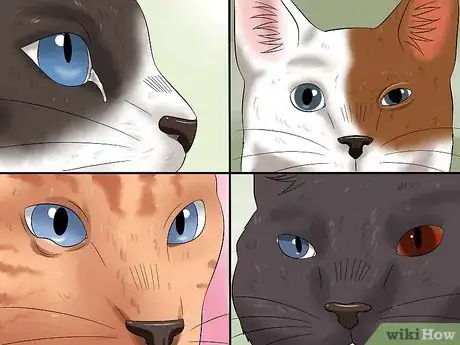
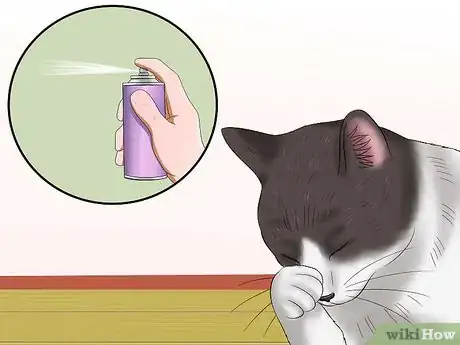
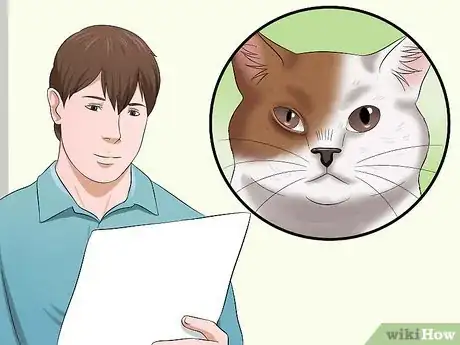
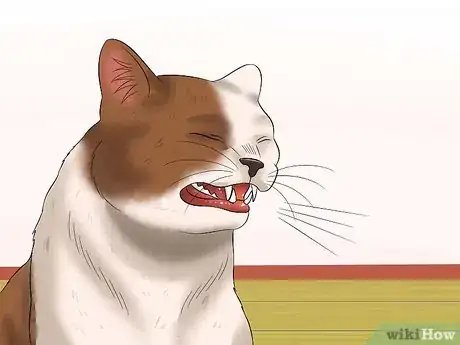
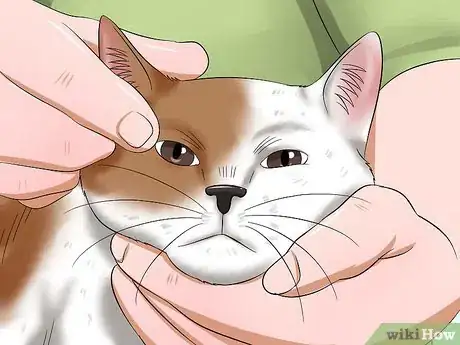

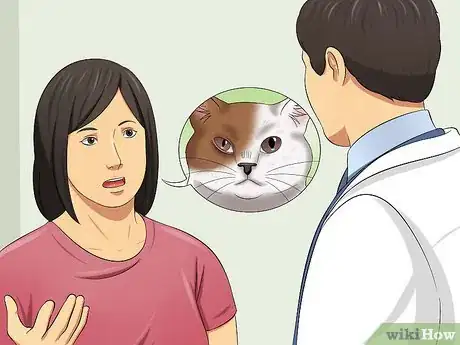

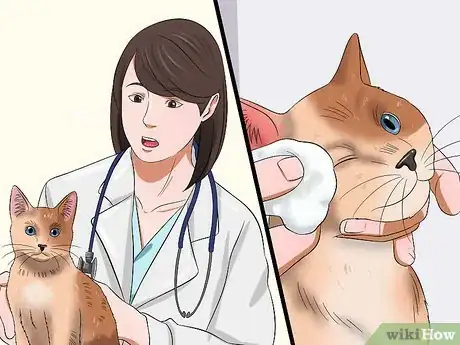
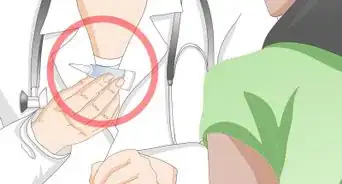
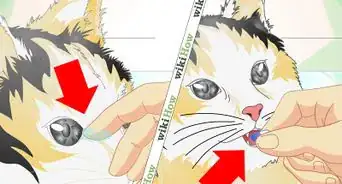
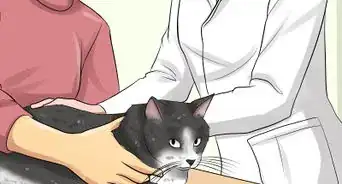


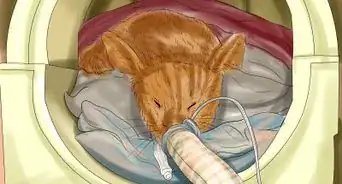
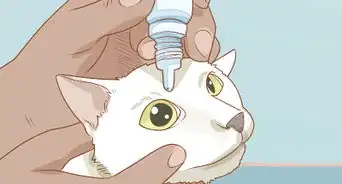
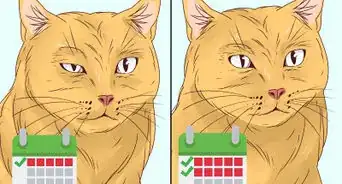

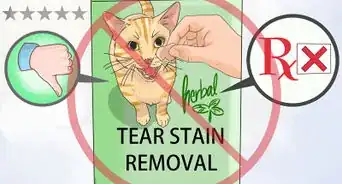

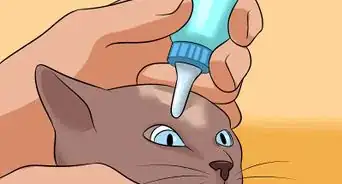
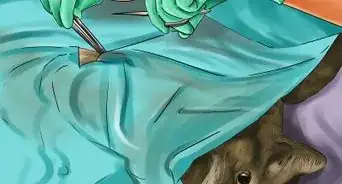










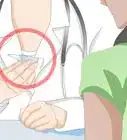

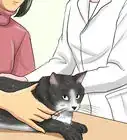




































Medical Disclaimer
The content of this article is not intended to be a substitute for professional medical advice, examination, diagnosis, or treatment. You should always contact your doctor or other qualified healthcare professional before starting, changing, or stopping any kind of health treatment.
Read More...